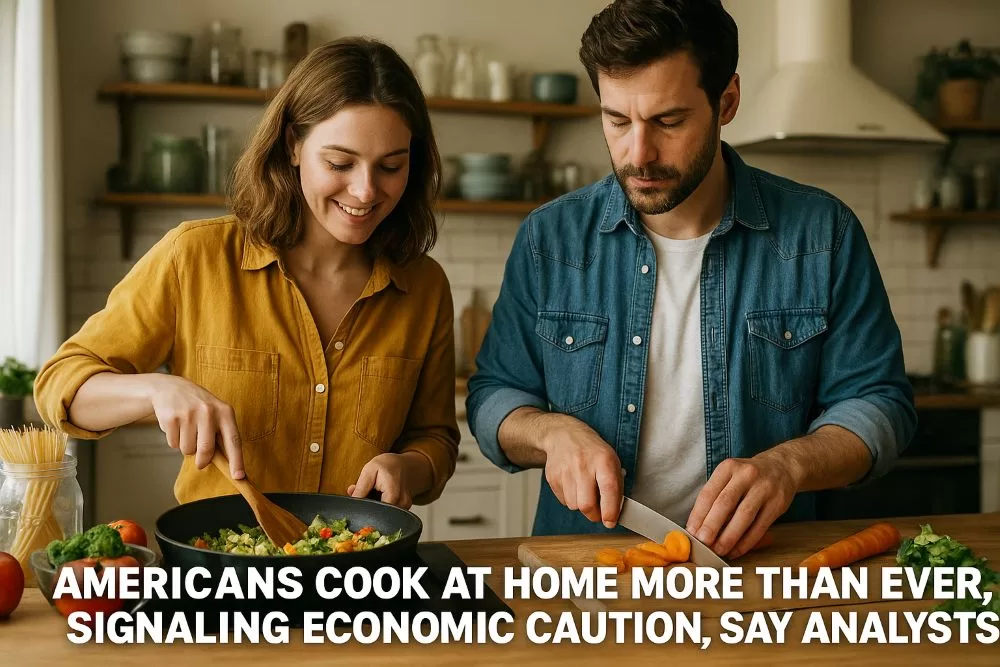Americans Cook at Home More Than Ever, Signaling Economic Caution, Say Analysts

NEW YORK, June 4 (WSH) — A surge in home cooking across the United States is raising concerns among economists and analysts, who warn it may reflect deeper anxieties about the nation’s financial outlook.
On June 2, Campbell Soup Company CEO Mark Clouse revealed that the rate of Americans preparing meals at home has reached its highest level since the onset of the COVID-19 pandemic in 2020. Consumers, he noted, are gravitating toward budget-friendly food options, including Campbell’s signature canned soups and other meal basics.
“All income levels have increased their purchases in the meals and beverage categories,” said Clouse during a quarterly earnings call, emphasizing that value, quality, and convenience are driving current trends.
Financial outlets such as CNBC and Axios interpret this pattern not as a shift toward healthy or deliberate living, but as a response to financial strain. WalletHub analyst John Kiernan told The San Francisco Chronicle that the increase in home cooking “isn’t a sign of a booming economy. If people were financially comfortable, they’d be dining out more often and buying fewer staples.”
Meanwhile, fast-food giants are reporting sharp declines in sales. McDonald’s U.S. market saw a 3.6% drop in Q1 revenue—the largest quarterly decrease in five years. CEO Chris Kempczinski noted a double-digit decline in visits from low-income consumers and a similar drop among middle-income guests across the fast-food industry.
The broader economic context adds weight to these shifts. The U.S. GDP contracted by 0.3% in Q1 2025—its first quarterly decline since 2022. Consumer confidence has also plummeted by 32% since January, reaching lows not seen since the 1990 recession.
Market analysts say the move toward home-cooked meals may foreshadow wider reductions in consumer spending, which comprises two-thirds of the country’s GDP. As prices at restaurants rise, eating at home becomes a financial necessity rather than a lifestyle choice.
Neil Saunders of GlobalData summed it up: “Dining at home may not be glamorous, but it’s cost-effective. For many families, fast food has become unaffordable.”

